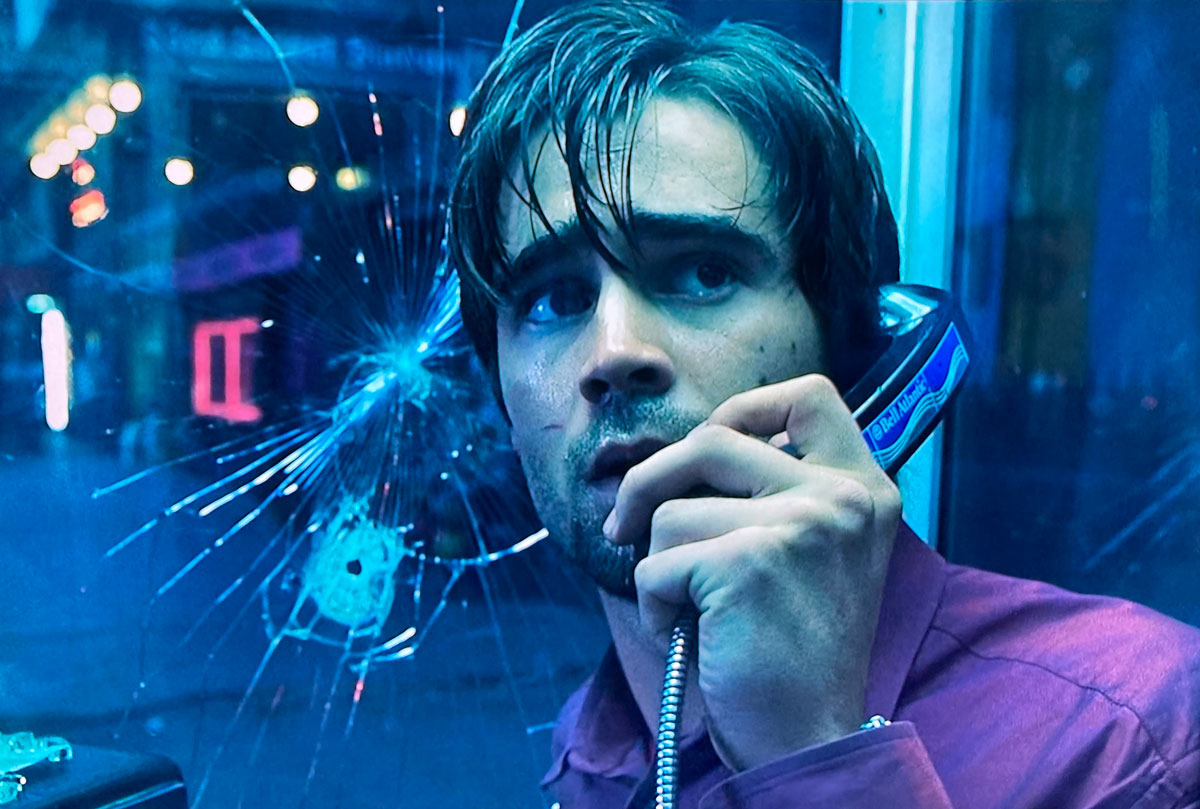
Many films utilise a tight 24-hour time-frame to create a sense of urgency and intensity by depicting events happening (as close as possible) in real-time. Examples of this technique has been used in many genres such as: romance, comedies, drama and westerns. However, some of the most energetic, gripping and exciting stories held within 24-hours are in the thriller genre.
1. Falling Down (Joel Schumacher, 1993)
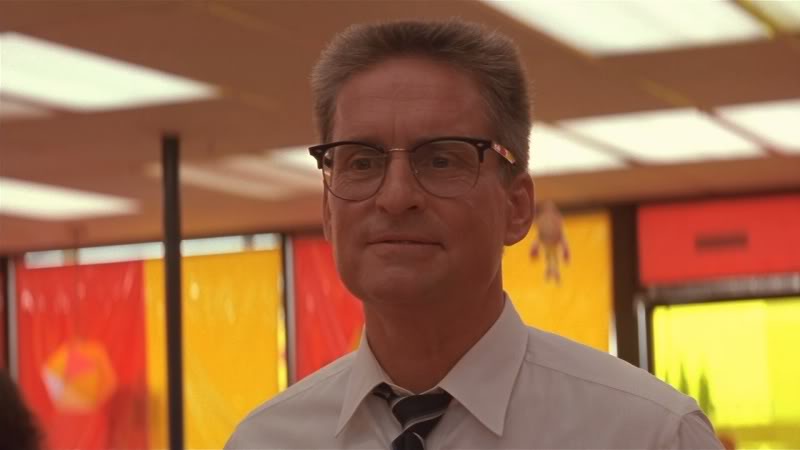
William ‘D-Fens’ Foster (Michael Douglas) is an ordinary man frustrated with the defects he sees in society. One morning while he’s stuck in a traffic jam, he abandons his car in frustration and embarks on a violent mission to his ex-wife’s house. Robert Duvall plays Martin Prendergast, an LAPD department sergeant who, on the day of his retirement, attempts to track Fosters down. The film was penned by Ebbe Roe Smith, an actor mostly known for his roles in Turner & Hooch and The Big Easy. It was directed by the late Joel Schumacher, who with early films such as St. Elmo’s Fire and The Lost Boys, proved himself to be a unique yet commercially viable Hollywood director.
The supporting cast includes Tuesday Weld in a truly captivating performance as Duvall’s neurotic wife. The film was shot in Los Angeles in the spring of ’92 in the midst of the L.A riots. Many of the themes the film explores were similar to issues going on in 90s Los Angeles. Beyond the cameras, the city had also reached its boiling point and lashed out in violent anger, much like William Foster’s explosive rage. The film takes place over a few hours, from morning to afternoon. Forster travels on foot across L.A, adding to the hot, claustrophobic tension the film creates.
Falling Down has quasi-Kafkaesque elements as Foster encounters surprising characters and unfortunate situations on his violent journey. This is highlighted in a tense scene in which Foster seeks refugee in a leather goods store only to discover that the owner is far more dangerous than him. The film was a critical and box office success with many critics, such as Roger Ebert and Peter Travers, praising Michael Douglas’ performance. The actor himself went on to state that this was one of his favourite roles to date.
Foster’s meltdown can be read in several ways. He embodies elements of the ‘racist white male’ stereotype, as most of the people affected by his actions are people of colour. The writer of the film suggests that, “it represents the old power structure of the U.S. that has now become archaic, and hopelessly lost. For both of them, it’s adjust-or-die time”. A simple yet melancholic reading is that Foster is a sad, bitter soul beyond help. His rampage unplanned and sloppy, he wanders through the film just as confused as the people he’s affecting. Summed up perfectly in the films iconic climax when Foster mutters somewhat bewilderedly to himself, “I’m the bad guy?”.
2. Collateral (Michael Mann, 2004)
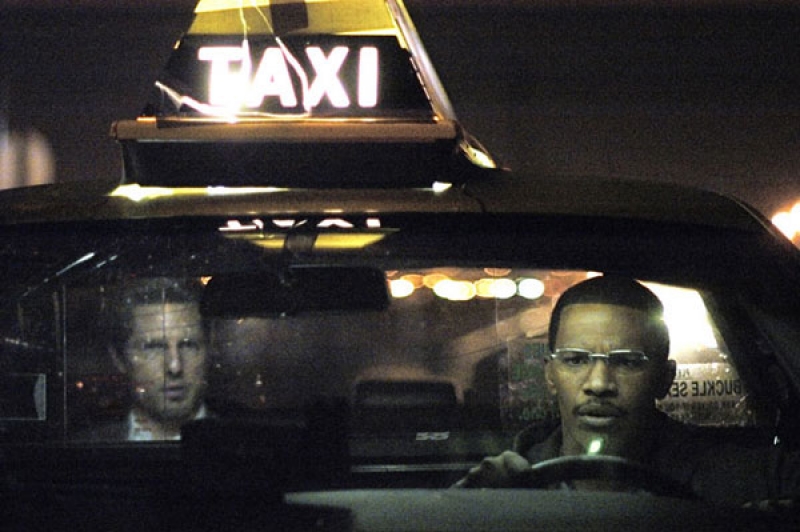
In this neo-noir crime thriller, Jamie Foxx plays Max, an L.A cab driver who finds himself the hostage of hitman Vincent (Tom Cruise). Max struggles to find ways to stop Vincent who forces him to drive him from hit to hit. The critically acclaimed script was written by Stuart Beattie, who came up with the idea for the film at only 17 years old when travelling home by taxi from Sydney airport and imagined a hitman riding a taxi from hit to hit.
Director Michael Mann is no stranger to the thriller genre, having directed atmospheric hits such as Thief, Manhunter and Heat. Mann takes the audience on a claustrophobic roller-coaster of increasingly tense scenes. The taxi is an unwitting player, the central tool used to imprison Max within this dangerous game. Comparison can be drawn with the Taxi driven by Travis Bickle in Taxi Driver, which shows him the unsightly streets on New York. Collateral’s supporting cast includes Jada Pinkett Smith, Javier Bardem, and Mark Ruffalo as an undercover L.A.P.D detective hot on Vincent’s tail.
Two cinematographers shot Collateral, Paul Cameron and Dion Beebe. There’s a sense of desperation in the night time shots of Los Angeles. Much like the night time scenes in David Lynch’s Mulholland Drive, the streets are dark and desolate. At times it seems apocalyptic, shots of the taxi cruising through vacant streets add to the film’s anxious atmosphere and highlight the hitman’s limited time frame. This is juxtaposed with scenes featuring overcrowded settings such as a hospital, a nightclub, and a jazz bar.
The film was a critical and box office success, gaining Foxx and editors Jim Miller and Paul Rubell Oscar nominations. Collateral is full of exciting action set pieces, even in the quiet moments, the dialogue and performances create a nail-biting experience. Essentially the film seems like a conversation between Cruise and Foxx. They argue on morals and motives, each character attempting to understand the other, yet deep inside knowing they never will.
3. Training Day (Antoine Fuqua, 2001)
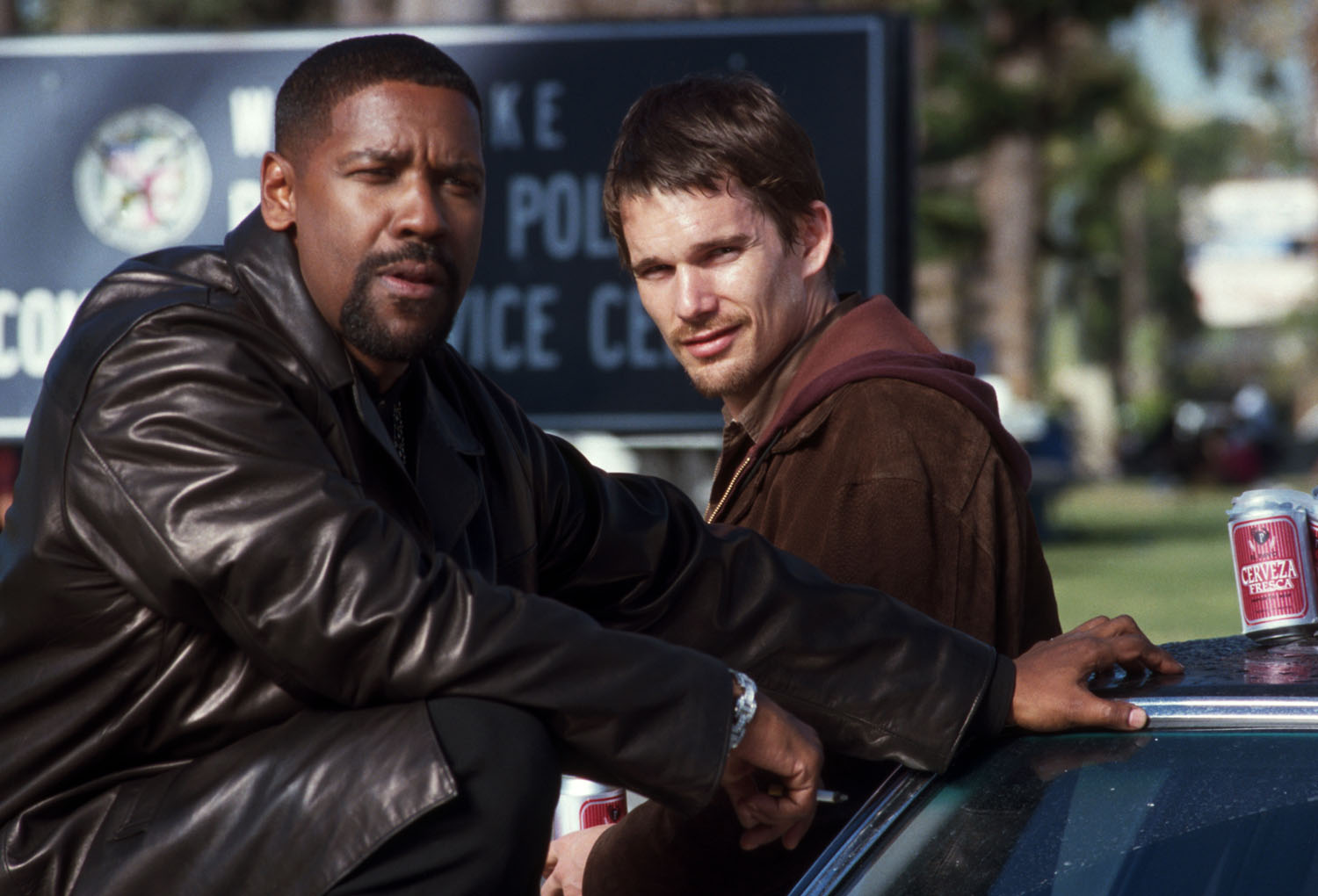
Jake (Ethan Hawke) is a rookie cop on his first day as a Los Angeles narcotics officer. He’s paired up with Alonzo (Denzel Washington), a rough yet seasoned detective who isn’t what he appears to be. The impressive supporting cast includes Tom Berenger, Scott Glen, Harris Yulin, Eva Mendes, Dr Dre and Snoop Dogg. The film was written by David Ayer who, the same year at Training Day, had another of his scripts made into a box office success, The Fast and the Furious. Ayer’s most noticeable trademark is his focus on criminal stories set in Los Angeles. Dark Blue, S.W.A.T., Harsh Times, and End of Watch all explore criminals and the police department in L.A.
The film was directed by Antoine Fuqua, a successful music video director who has since directed many big budget Hollywood films such as The Equaliser and The Magnificent Seven remake. Authenticity was significantly important for Fuqua when directing the film. He managed to shoot on location in L.A’s toughest gangland neighbourhoods, as well as having an L.A based gang technical advisor. Fuqua even hired real-life “Bloods” and “Crips” gang members for several scenes.
Ethan Hawke delivers an energetic performance as the rookie cop who comes to terms with his own morals and ethics in his attempt to bring justice against Alonzo. However, Denzel Washington truly steals the show in his portrayal of Alonzo. An intelligent and marvellous yet corrupt detective, his performance is breath taking from start to finish. The character of Alonzo is loosely based on Rafael Pérez, a real-life L.A narcotics. Pérez was involved in many scandals including the infamous Rampart scandal in the late 1990s. Washington grew a beard to psychically emulate Pérez’s appearance and spent countless of hours studying L.A.P.D detectives.
One cannot watch the film without thinking of Rodney King, the ’92 riots or the O.J. Simpson chase. It’s so true to its environmental history and perspective of the L.A.P.D. The film is a non-stop ride through the city’s violent streets with the most dangerous characters being the guide. Training Day not only succeeds in being a stylish yet gripping thriller but it also puts a spotlight on personal morals, justice, corruption and power.
4. Rope (Alfred Hitchcock, 1948)
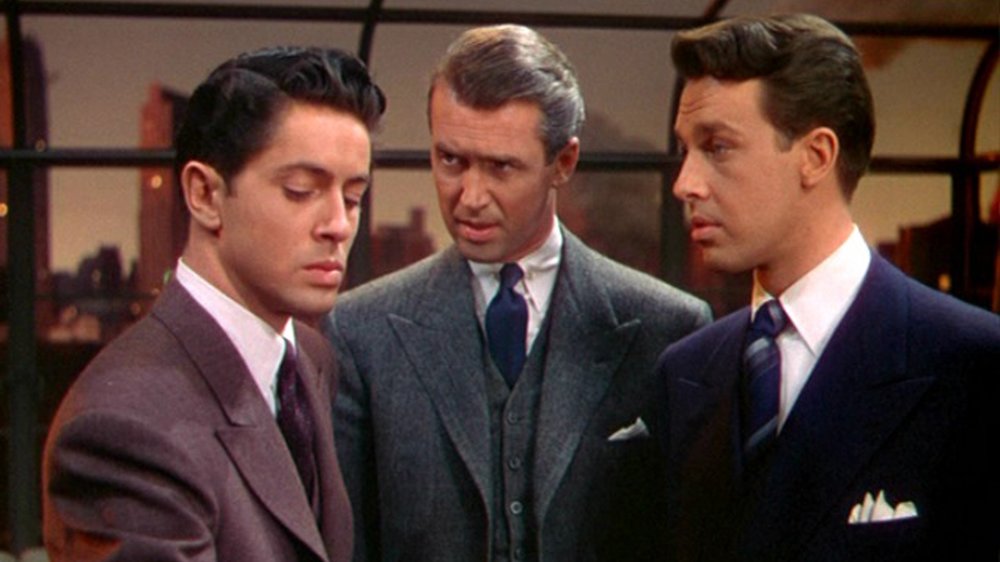
Moments before hosting a dinner party with their friends, Brandon Shaw (John Dall) and Phillip Morgan (Farley Granger) strangle their friend to death with a rope. They hide the body in a chest and place a buffet dinner on top. They welcome in their guests including the victim’s parents, his fiancée (Joan Chandler), and their college professor (James Stewart). The film is an adaptation of Patrick Hamilton’s 1929 play of the same name.
The film was directed by the master of suspense, Alfred Hitchcock. Shot in 1948, this was his first Technicolour film as well as being the first of his and Sidney Bernstein’s Transatlantic Picture productions. The film is technically impressive as it takes place in real-time and is cleverly shot and edited to appear to be one continuous take. Naturally, due to the camera’s capacity, the film comprises of 10 takes, not including the opening credits. Hitchcock cleverly captures the anxiety and suspense by submitting to the idea that less is more. The film is almost entirely set in the living room of a Manhattan apartment, the cast is extremely limited and there’s minimal cuts which forces the audience to stay strictly in the world of the characters.
Just like most of his thrillers, Hitchcock constantly hints at the film’s essential drama through the camera. The audience is reminded of the dead body in the chest throughout the film. Hitchcock’s blocking adds to the tension as he directs characters to approach the chest, at times coming close to even opening it. The chest becomes a character in itself.
Shaw and Morgan’s motive for the murder isn’t revenge, jealousy or a sudden burst of anger. It derives from Nietzsche’s ‘Übermensch’, a concept that their professor, Rupert Cadell had used hypothetically. Essentially, the two students believe they have the right to murder someone that isn’t as superior as they. The film delves into themes such social inequality, sadism and the dangers of misreading one’s words.
5. Speed (Jan De Bont, 1994)

Keanu Reeves stars as an L.A.P.D. SWAT bomb disposal officer who must prevent a bomb exploding aboard a public bus, if the speed of the city bus drops under 50 mph, the bomb will be detonated. The film was penned by Graham Yost and was cinematographer Jan de Bont’s directorial debut. Jan de Bont shot many successful action movies before taking on the directorial roles in The Hunt for Red October, Die Hard and Basic Instinct.
Sandra Bullock stars as Annie, a passenger on the city bus, who takes over the driving after the bus driver is injured. Dennis Hopper delivers a menacing performance as Howard Payne, an extortionist bomber, who has already crossed paths with Keanu Reeve’s character. The supporting cast includes Jeff Daniels as Keanu’s partner, Joe Morton as L.A.P.D. Captain McMahon, and Alan Ruck who offers comedic relief as an annoying, out-of-his-depth tourist. The film was a box office success, remaining number 1 until Mike Nichols’ Wolf. It also did wonders critically; Roger Ebert gave the film 4 stars and praised its exciting action scenes.
Due to the film’s nail-biting opening scene, the film isn’t technically set over 24 hours. However, from the moment Reeves discovers the bomb on the bus, the film hits the gas, accelerating through suspenseful scenes and action set pieces, which take place over the course of a few hours. The film is one of those rare action films, much like Die Hard, where all of the components work brilliantly together. The dialogue is quick and witty, the characters are believable and likeable, the action is exhilarating and after watching it, you can easily understand why it’s a 90’s classic.